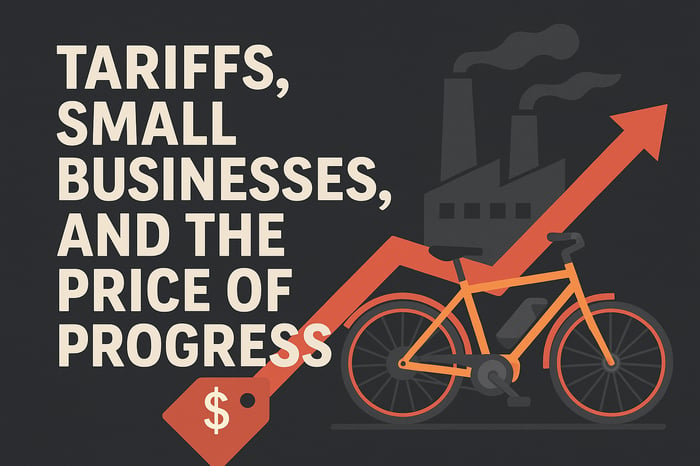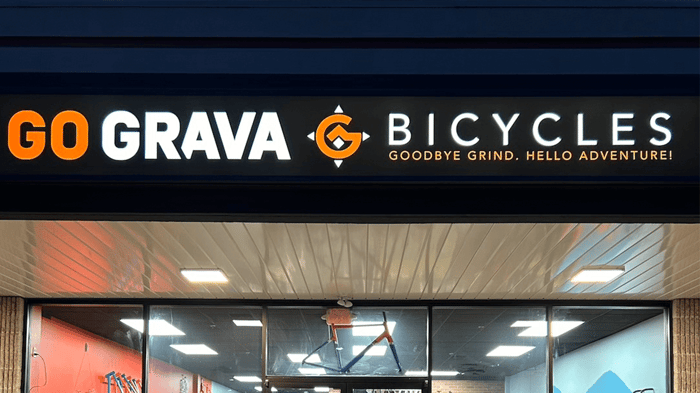Tariffs, Small Businesses, and the Price of Progress: Why Policy Needs a Smarter Gear
Tariffs were meant to protect American manufacturing. In practice, the current mix has raised prices, squeezed small retailers, and confused consumers—especially in cycling and e-mobility. There’s a better way.
What Tariffs Are Doing on the Ground
The modern bike is a global product: frames, motors, batteries, and drivetrains often come from different countries. When tariffs stack across finished goods and parts, small shops pay more long before a wheel turns. Consumers feel it at checkout; local communities feel it in slowed growth.
The Better Approach: An Industrial “Staircase,” Not a Wall
If the goal is to rebuild U.S. manufacturing, policy should ramp up in phases so domestic capacity can actually grow:
- Phase 1 — Target finished products (complete bikes & e-bikes) first to encourage final assembly in the U.S.
- Phase 2 — Then components, once assembly plants exist and need local frames, wheels, drivetrains, motors, and batteries.
- Phase 3 — Finally raw materials, after there’s meaningful domestic demand for aluminum, steel, and battery inputs.

How the Cycling Industry Is Responding
Trade Association & Retailer View
The prevailing industry position is to oppose broad, sudden tariff expansions on complete bikes and critical parts while pushing for targeted exclusions where no domestic alternative exists. The aim is to prevent consumer price spikes and give assemblers time to scale.
- Resist new “derivative” metal-content tariffs on bikes/e-bikes that would stack on existing duties.
- Extend/restore Section 301 exclusions for key categories to keep local assembly viable.
- Pair tariffs with investment in U.S. capacity (metalworking, batteries, workforce) rather than relying on price shocks alone.
Brand & OEM Adjustments
Larger brands are diversifying sources (beyond China), phasing price changes, and altering specifications to manage costs. But for many mid- to high-volume parts, U.S. options are still limited—so abrupt tariffs often act as pure cost rather than capacity-building.
Guardian Bikes’ Approach & Stance
Guardian has leaned into U.S. assembly and says it has begun U.S. frame production as part of a broader reshoring push. Publicly, it has advocated adding bicycles, frames, and e-bikes to stricter steel/aluminum content tariffs and, earlier, floated a flat per-bike tariff concept. Guardian’s message to customers emphasizes domestic building to avoid tariff/markup inflation.
What Tariffs Add to an E-Bike—In Plain Numbers
Here’s a simple visualization of how multiple tariff layers can inflate even a locally assembled e-bike:

- Frames: +$60 (~20%)
- Motors: +$90 (~20%)
- Batteries: +$70 (~20%)
- Drivetrains: +$40 (~20%)
- Small parts & labor: +$30 (~12%)
Illustrative example; actual rates vary by HTS code, origin, and overlapping programs.
Local Value Chain vs. Imported Value Chain
Local assembly keeps dollars in the community through jobs, service, and customization—while reducing shipping emissions. Fully imported paths push more value overseas and add long-haul freight impacts.

A Non-Partisan Path Forward
- Phase tariffs (finished goods → components → raw materials) to let U.S. capacity grow.
- Maintain/expand component exclusions while domestic options are limited.
- Pair tariffs with targeted investment in metalworking, batteries, and workforce training.
- Reward local value-add (assembly, safety testing, service) with credits or procurement preferences.
Bottom line: If we want production at home, the solution isn’t a wall—it’s a ramp. Let’s build capacity one smart component at a time.






